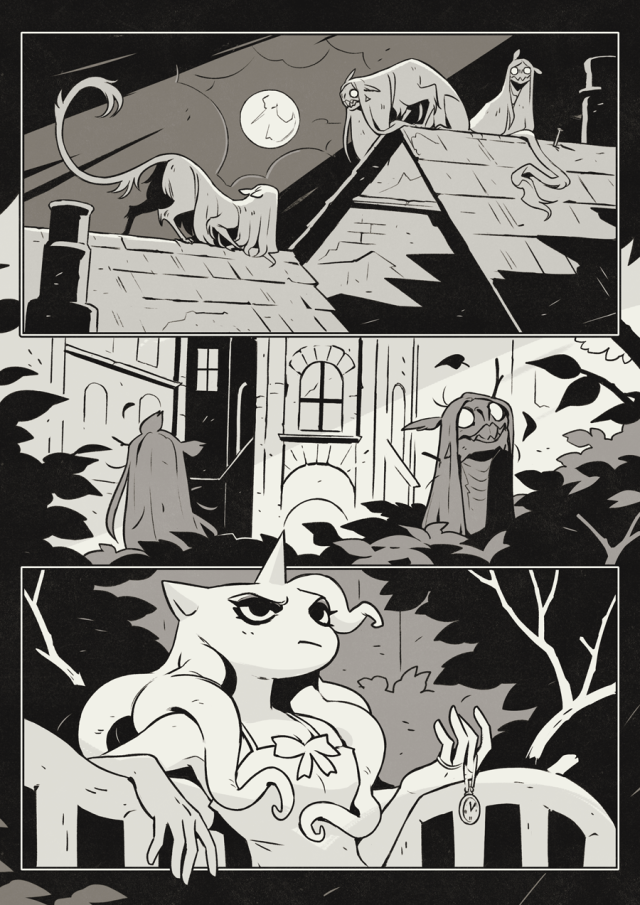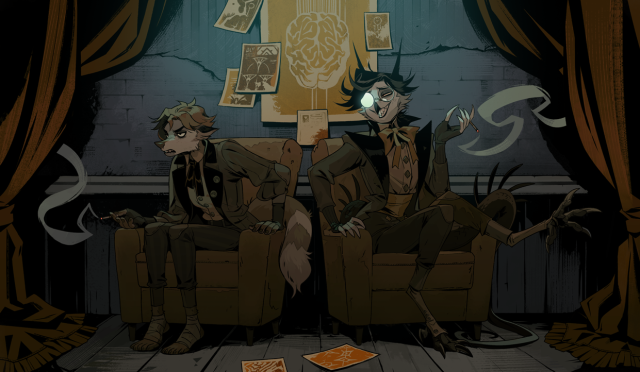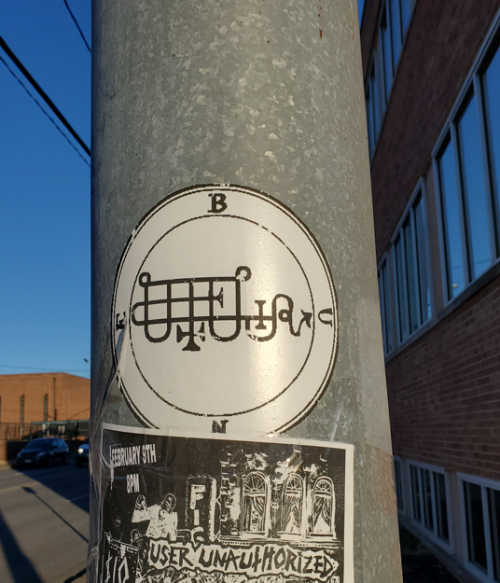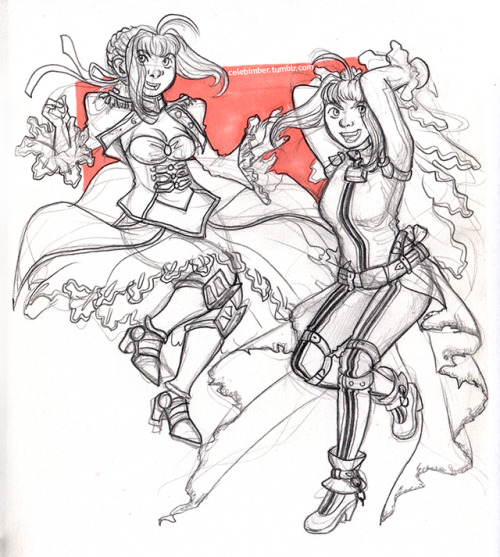#goetia
Decided to relax and doodle out one of my favorite Goetic demons.
I haven’t posted in awhile, but no time like the present to throw some more stuff up! ;)
Post link
If you want any chance of forming solid relationships with demons, don’t follow the rituals established in the ars goetia. Those rituals are intended to lure and effectively trap demons while you “work with” them. Protect yourself against demons you don’t have strong relationships with and don’t trust, but trapping them and making them work for you is just asking for a demon to be pissed at you later.
Demons are not your tools or means to an end, they are entities that command respect and to be treated with dignity.
This isn’t discussed enough among practitioners, thank you for bringing it up.
There is plenty of important information in the ars goetia, and preserving it is important for the sake of history and learning from King Solomon’s mistakes. The reality, though, is that his approach to working with demons allegedly caused him to go insane and suffer at the hands of the spirits that he conjured.
If you want to have organic, healthy working relationships with the demons of the goetia, or any demon really, using demon traps or force summoning isn’t going to help you.
If anything, that is going to cause them to have an aversion to you, and it’s going to really fuck with your life, and your practice. Don’t be surprise if you trap a demon, force it to share its energy for a magical practice, and then suddenly everything in your life is going sour.
S. Connolly wrote several books on demonolatry that talk about working with demons in a healthy way. The Complete Book of Demonolatry is a great guide for people who want to work with these demons and their sigils without utilizing the seals.
I think this is extremely important to keep in mind when it comes to any spiritual entity not of our physical realm. They do not exist to be at our beck and call. They’re not around for our amusements. They’re not toys to be played with and then discarded later. If you’re going to disrespect otherworldly beings, don’t be surprised at being disrespected back in otherworldly ways that you may not be able to handle.
WHO WOULD WIN
2 major goetic demons, a“King” & “Duke” of Hell
vs.
1 scrapey boi
impotent satanist vandals stay eternally BTFO (as is tradition) keep the black majik rituals in mom’s basement where they belong, there’s no place for this shit out in public
Post link
Solomon (Romani): A pessimist sees a dark tunnel.
Merlin: An optimist sees the light at the end of the tunnel.
Caster Gilgamesh: A realist sees a freight train.
Goetia & Oberon-Vortigern: The train driver sees three idiots on the train tracks.
Witchcraft in Hellenismos
Disclaimer: This post is non-exhaustive, and though I’ll try to equally spread my focus, it will inevitably lean towards the kinds of magik I personally practice.
Often, in modern pagan circles, people are under the impression that Ancient Hellenismos either didn’t have or despised witchcraft. This is largely from three causes. The first is simply misreading, or failing to come across witchcraft in the Hellenism they research. Second is only reading about or adhering to branches that didn’t like witchcraft (usually due to it being perceived as hubristic) and therefore assuming that’s the most popular opinion. Finally, sometimes people apply their assumptions based on Christian and Germanic culture to Hellenismos, and assume it carries the same attitudes.
In actuality, the view of witchcraft was historically more neutral. Witches weren’t typically seen as hags, but maidens, respectable men, priests, and more. It should also be noted that, frankly, “witch” is a slightly tonally incorrect translation usually applied to the word “pharmakis.”
For historical attitudes towards witches, we can read works surrounding mainly Medea and Kirke, as well as Hekate if we go past pharmakeia.
But pharmakeia and nekromankia (necromancy) are far from the only forms of witchcraft or magik–which in Ancient Greek would be “mageia” or “goeteia” depending on time and place, but will simply be called “magik” here.
So, with that very long introduction, let’s get into types of magik.
Pharmakeia-Herbal Sorcery, Witchcraft
Pharmakeia is perhaps the most recognizable form of magik in historical Hellenismos. As mentioned, it was associated with the heroine Medea, as well as the goddess/nymph/hero (it’s complicated) Kirke. This was magik performed using the aid of herbs, and both historically and now blends magik and science. It includes brewing poisons, casting curses, potionmaking, transmutation, and more. Kirke, famously, used pharmakeia to transform men into swine, whereas Medea tended towards poisoning, but both had variety in their craft.
Generally, when pharmakeia is translated, it’s done very broadly compared to other kinds of magik. For example, pharmakeia is usually translated, especially in the Odyssey, to “witchcraft” or “sorcery.” Pharmakis–the word for a practitioner of pharmakeia–is usually translated to “witch.” This often leads to misconceptions of witchcraft in Hellenismos being specifically oriented around herbs and transmutation, when that’s only a small piece of the picture.
Nekromankia/Nekromanteia-Necromancy
Nekromankia is far more famous now in its Anglicized pop-culture form, but it was most certainly present in Hellenismos. It’s important to clarify that in Ancient Hellas, nekromankia was magik pertaining to the dead, not things such as zombies and raising the dead. In Hellenismos, the maintenance of good relationships between the dead and the living is of great importance. There were plenty of festivals devoted to placating and celebrating the dead–not to mention the monthly Attic holiday Hekate’s Deipnon, devoted to honoring Hekate, goddess of nekromankia. So, unsurprisingly, there were witches who gravitated towards this as a craft.
Multiple Hellenic deities were associated with nekromankia, the most notable of which being Hekate, but also Persephone. Though, of course, any khthonic deity–especially khthonic theoi who also had non-khthonic aspects–were relevant, such as Haides or Hermes. A practitioner of nekromankia would be referred to as a nekromanteías.
Manteia-Divination, Oracles
It should be noted that manteia is heavily contested as being a form of witchcraft or even magik in Hellenismos, but it certainly meets the qualifications. The main reason this debate exists is controversy around magik in Hellenismos in general, since as most Hellenists know manteia is so central to so much of our religion, and those who dislike magik are insulted by it being considered that. Additionally, the definition of magik is constantly in flux–it’s debated in modern magik circles, and it’s even harder to apply a definition we can hardly agree on to an ancient culture with its own independent definitions.
Manteia is, most simply, the power to give prophecies, divination, and the use of oracles. It’s the power of the Pythia (Delphic Oracle), it’s in the Olympian Alphabet Oracle, it’s every single seer and prophecy and divinatory method known to us.
Someone who practices manteia is called a mantis (usually translated as “soothsayer” or “diviner”) or a khresmologos (“oracle”), depending on station.
Heliomanteia-Solar Magik
Heliomanteia is hard to find detailed historical information on, but most simply, it’s magikal invocation of the sun. This is generally done by attempting to harness the power of the sun, or by requesting the aid of solar deities (namely, Helios).
Interestingly, Helios had many associations with witchcraft and warding off evil. It could be assumed that, due to the qualities attributed to Helios, heliomanteia would be best used to reveal truth, ward off evil, harness the power of fire, promote life, and similar.
Presumably, a practitioner of heliomanteia is a heliomantis.
Goeteia-Magik, Charms
Goeteia (in modern times “goetia”) is a term for magik that fell out of style for general magik around the 5th century BC in favor of mageia. It, additionally, was shoehorned into a dichotomy of theurgy (divine, “professional,” and virtuous magik) and goeteia (low, malicious, and fraudulent magik). This was largely due to political and social overhaul. The name became associated with fraudulent and harmful magik, and talk of goeteia in Ancient Hellas is a major source most anti-witch Hellenists use.
The goes (practitioner of goetia) was maligned, seen as hubristic and either trying to go against the power of the gods or intending to scam others. Plato famously portrayed them as malicious frauds, and he was not alone. Since the term “goes” is generally translated as “witch,” it’s not a leap to figure out why this lead to a lot of anti-witch Hellenists.
However, before this (and technically after), “goeteia” simply meant magic, charms, and similar. As a unique practice, and not simply an umbrella term for witchcraft, it can be considered channeling, a relative of nekromankia, or baneful magik, depending how much one leans into the later definition.
Theourgía-Deity Work, Divine Magik
Theourgia (in modern times “theurgy”) quite literally translates to “deity work” or “god(s) working.” It is ritual, sometimes magik, done with the intent of invoking one or more of the theoi. This was the ritual magik often performed by priests. In fact, it could be considered the mainstream magik of Ancient Hellas–assuming, of course, that one considers it magik.
It’s not only historic magik that was central to the religion, but sets historical precedent for the controversial phrase “deity work.” The existence of theurgy as the “higher form” of magik in Ancient Hellas is singlehandedly enough evidence to prove the phrase is not and would not be considered inherently hubristic. It should be noted that this form isn’t inherently superior, but if you asked Plato, he would disagree.
There are certainly more forms of mageia in Ancient Hellas–For example, I skipped over amulets (periapta), which were almost incontestably the most common magik in a lot of Ancient Hellas, since they could technically fit under some other crafts and because they’re the easiest to research on your own. It’s a similar case with potions, too.
One important takeaway is the hard line between magik, religion, and science is a fairly recent invention. Pharmakeia could act as medicine, not just sorcery. Many potions were also medication. Frankly, the more women were involved, the more practical it tended to be, with ‘spells’ often being genuine aids to childbirth and/or birth control. This didn’t make them any less magikal, and the magik doesn’t make it less real.
And I hope I made it very, very clear, but witchcraft has always been in Hellenismos, and isn’t inherently hubristic. That is a myth, and is rooted often in historical (and modern) classism, misogyny, xenophobia, or similar. Always consider your source’s incentive to stigmatize before discounting all Hellenic witches.
Goetia: Tarot in Darkness!

Just OC (Goetia) stuff. Part 1 of ??: in which I plan to do a few simple front views for design and exploration
In order -> Valzan, Tao, Oscar, Drevor, Ophelia and Percy


S: Some stuff… That’s really contrast-y HUH
(dunno if anyone cares, but comic is on brief hiatus since I didn’t have much time to work on it in the recent 2 months, but I’m picking it up soon-ish again).


Page 15-16 of a project I’m working on. Archive of pages is freely available on my Ko-fi page [link].


Page 13-14 of a project I’m working on.
Archive of pages is freely available on my Ko-fi page [link].
(These are the last two of the backlog! I’ll be finishing the rest of the chapter in the coming weeks)


Page 11-12 of a project I’m working on.
Archive of pages is freely available on my Ko-fi page [link].



Page 9-10 of a project I’m working on. Also a little bit of character art!
Archive of pages is freely available on my Ko-fi page [link].


Page 7-8 of a project I’m working on.
Archive of pages is freely available on my Ko-fi page [link].


Page 5-6 of a project I’m working on.
Archive of pages is freely available on my Ko-fi page [link].


Page 3-4 of a project I’m working on.
Archive of pages is freely available on my Ko-fi page [link].


Page 1-2 of a project I’m working on.
Archive of pages is freely available on my Ko-fi page [link].



S: OC drawings that are all over the place


S: More stuff!
(also a Lark when he was a teen as a character design exploration)


S: Personal art, OC stuff. And Bloodborne dress-up because FUN.
I didn’t abandon Tumblr, I promise! But May and me both have been very busy.
I’ve actually made a Ko-fi page where I frequently post larger resolution files and in-betweens!
You can check it out here: [link]





OC stuff

Here’s some older face doodles of Drevor. Just putting up some backlog one by one weeeeee

Peach flavor

mind theatre

Redrew our weird twin OCs














